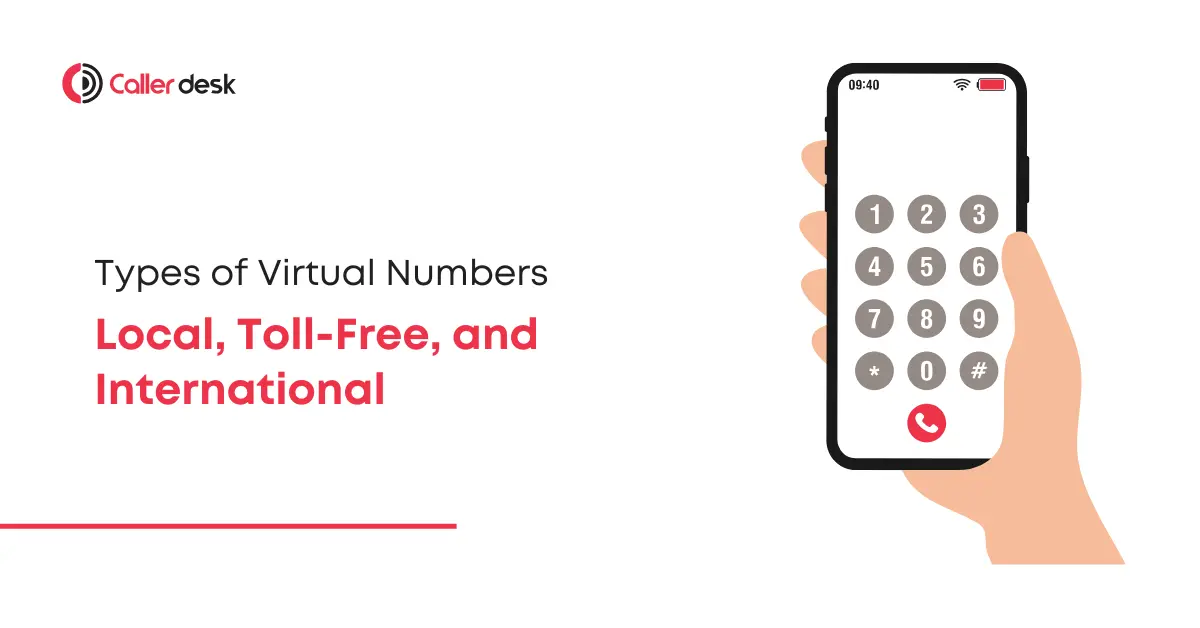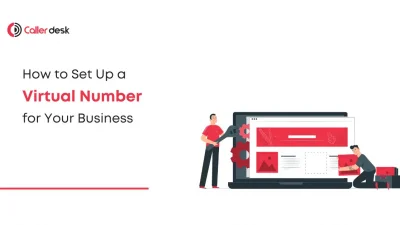Virtual numbers are revolutionizing how businesses communicate. By offering a professional phone number without being tied to a specific location or traditional phone line, virtual numbers empower businesses to connect with customers seamlessly, flexibly, and affordably.
But how do you decide which type of virtual number is right for your business? Should you choose a local number to build trust, a toll-free number to boost customer inquiries, or an international number to expand your reach?
In this guide, we’ll explore the types of virtual numbers, their benefits, and how they can help businesses thrive.
What Are Virtual Numbers?
A virtual number, also known as a cloud-based number or VoIP number, is a phone number that operates over the internet rather than being tied to a physical phone line. It allows businesses to make and receive calls from any device, anywhere in the world.
How Do Virtual Numbers Work?
- Call Initiation: A customer dials your virtual number.
- Cloud Routing: The call is routed through secure cloud technology using Voice over Internet Protocol (VoIP).
- Device Connection: The call is forwarded to your designated device, such as a smartphone, desktop, or call center.
- Seamless Interaction: Your team answers the call, ensuring smooth and efficient communication.
Types of Virtual Numbers
1. Local Virtual Numbers
Local virtual numbers come with area codes specific to a region, such as:
- +91-11 for Delhi.
- +91-22 for Mumbai.
- +91-80 for Bengaluru.
These numbers make your business appear local, even if you’re operating from a different city or remotely.
Benefits of Local Numbers
- Builds Trust: Customers prefer calling local businesses for a personalized experience.
- Cost-Effective Communication: Local calls are cheaper for both businesses and customers.
- Establishes a Local Presence: Market yourself as a local brand without needing a physical office.
Use Cases
- Small businesses targeting a specific city or region.
- Freelancers maintaining a professional image.
- Companies expanding into new territories.
Example
A home services company in Pune uses a local number (+91-20) to connect with customers, increasing trust and engagement in the area.
2. Toll-Free Virtual Numbers
Toll-free numbers are recognizable by their prefixes, such as 1800, 888, or 800. They allow customers to call your business free of charge.
Benefits of Toll-Free Numbers
- Encourages Customer Inquiries: Removing call costs increases the likelihood of customer engagement.
- Professional Appearance: Toll-free numbers give your business a polished, nationwide image.
- Nationwide Reach: Connect with customers across the country effortlessly.
Use Cases
- Customer service departments handling high call volumes.
- E-commerce businesses offering nationwide support.
- Enterprises building a credible and trustworthy image.
Example
An online clothing retailer uses a toll-free number (1800-FASHION) for customer inquiries, making it easy for shoppers to ask questions or resolve issues.
3. International Virtual Numbers
International virtual numbers are local numbers from another country. For example, an Indian company can use a US-based number (+1) or UK-based number (+44) to connect with international customers.
Benefits of International Numbers
- Global Reach: Establish a presence in international markets.
- Improved Customer Experience: Customers are more comfortable calling a local number.
- Cost Savings: Avoid the high costs of international calls by providing a local alternative.
Use Cases
- Multinational corporations managing global operations.
- Businesses expanding into international markets.
- Remote teams collaborating with global clients.
Example
A Bengaluru-based IT outsourcing company uses a UK-based number (+44-20) to provide seamless support to its London-based clients, improving accessibility and trust.
Choosing the Right Virtual Number
When selecting a virtual number, consider:
1. Your Target Market
- Are you focused on a specific city? Opt for a local number.
- Do you serve nationwide customers? Choose a toll-free number.
- Are you expanding globally? Use an international number.
2. Customer Preferences
- Would your customers feel more comfortable with a familiar local number?
- Would a toll-free option make it easier for them to reach you?
3. Business Goals
- Do you want to build trust in a specific region?
- Are you aiming to provide nationwide accessibility?
- Are you looking to establish a global presence?
Pro Tip: A mix of local, toll-free, and international numbers can help meet diverse communication needs effectively.
Benefits of Virtual Numbers
1. Cost-Effective Communication
Virtual numbers significantly reduce telecom expenses by eliminating the need for traditional phone lines and physical infrastructure. Despite their affordability, they offer advanced features like:
- Call Routing: Automatically direct calls to the appropriate team or department.
- Analytics: Gain insights into call performance, customer behavior, and team productivity.
This cost-saving solution is ideal for businesses of all sizes, from startups to large enterprises.
2. Flexibility
Virtual numbers allow you to manage calls from anywhere, on any device, making them perfect for:
- Remote Teams: Employees can take calls seamlessly, whether at home or in the office.
- Businesses with Multiple Locations: Calls can be routed to the nearest office or a centralized team, ensuring smooth operations.
3. Scalability
As your business grows, virtual numbers can scale with you without the need for additional hardware or complex setups. You can:
- Add multiple numbers to cater to different regions, departments, or campaigns.
- Onboard new users or teams effortlessly.
For example, an expanding e-commerce brand can add local numbers for new cities while maintaining centralized control.
4. Improved Customer Experience
Virtual numbers are designed to improve the customer journey. Features like automatic call routing ensure customers are quickly connected to the right team, reducing wait times and improving satisfaction.
Real-World Example: A travel agency integrates virtual numbers into their operations:
- Toll-Free Numbers for booking inquiries, making it easy for customers to connect without worrying about call charges.
- Local Numbers for regional offices, building trust and accessibility in specific locations.
- International Numbers to handle inquiries from global clients.
All these numbers are seamlessly integrated into one system, ensuring a smooth experience for both customers and agents.
Conclusion
Virtual numbers are more than just phone numbers—they’re a strategic tool for businesses to build trust, improve accessibility, and support growth. Whether you need a local number to establish a presence in a specific region, a toll-free number for nationwide customer service, or an international number to expand globally, virtual numbers offer unparalleled flexibility and cost savings.
Explore the options today to streamline your communication and take your business to the next level!
Frequently asked questions
1. Can I use multiple virtual numbers for my business?
Yes, many businesses use a combination of local, toll-free, and international numbers to cater to different customer needs.
2. Are virtual numbers expensive?
No, they’re highly cost-effective and eliminate the need for traditional telecom infrastructure.
3. How do I set up a virtual number?
You can partner with a provider like CallerDesk to choose the right number, configure call routing, and integrate features like IVR.
4. Can virtual numbers handle high call volumes?
Yes, virtual numbers can be scaled to manage high call volumes, making them ideal for customer support and sales teams.
5. Can I switch the device linked to my virtual number?
Absolutely! Virtual numbers allow you to route calls to any device or system of your choice.





